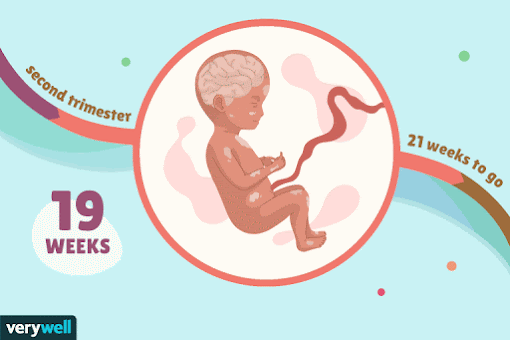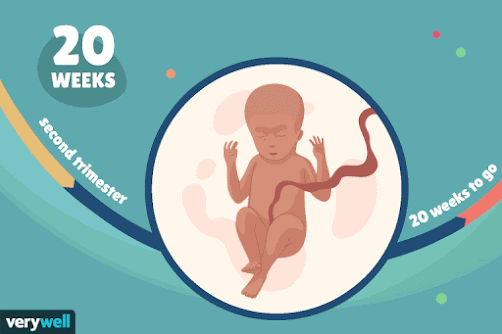Where does fertilisation take place?
When the male releases semen into the vagina, the spermatozoa swim through the cervix into the uterus. Usually, the ovum is fertilised in one of the Fallopian tubes. A spermatozoon and an ovum fuse together to form a zygote.
What happens during pregnancy?
For forty weeks, or three trimesters, the zygote develops and grows into a baby ready for birth.
In the first trimester, the zygote implants in the wall of the the uterus. At this stage it is called an embryo. The placenta develops in the uterus. Nutrients and oxygen travel from it to the embryo along the umbilical cord. It also filters out toxins and removes carbon dioxide. The amniotic sac grows around the embryo. It is filled with amniotic fluid, which protects the growing embryo.
At the start of the second trimester, the embryo is between five and six centimetres long. It is now referred to as a foetus. The internal organs develop.
During the third trimester, the foetus grows and gains weight. Before birth, the foetus generally turns so that its head is pressing against the opening of the uterus.
 |
| Placenta |
 |
| Amniotic sac |
What happens during birth?
The process of birth starts when the muscles in the walls of the uterus begin to contract, causing the cervix to dilate or open. At this time the amniotic sac normally bursts. The contractions of the uterus push the foetus through the cervix and out of the mother’s body.
Once the baby is born, its airways are cleared so that it can start to breathe. The umbilical cord is cut close to the baby’s skin. Contractions continue until the placenta is expelled from the mother’s body. Babies are born with an immature nervous system and digestive system.
Generally they feed only on their mother’s milk for the first months of life.
PARA SABER MÁS
GEMELOS Y MELLIZOS


































No hay comentarios:
Publicar un comentario
Nota: solo los miembros de este blog pueden publicar comentarios.